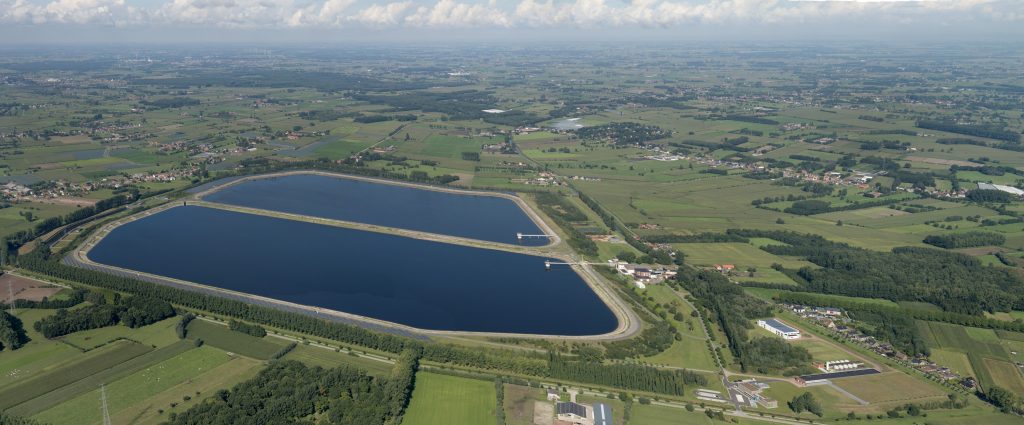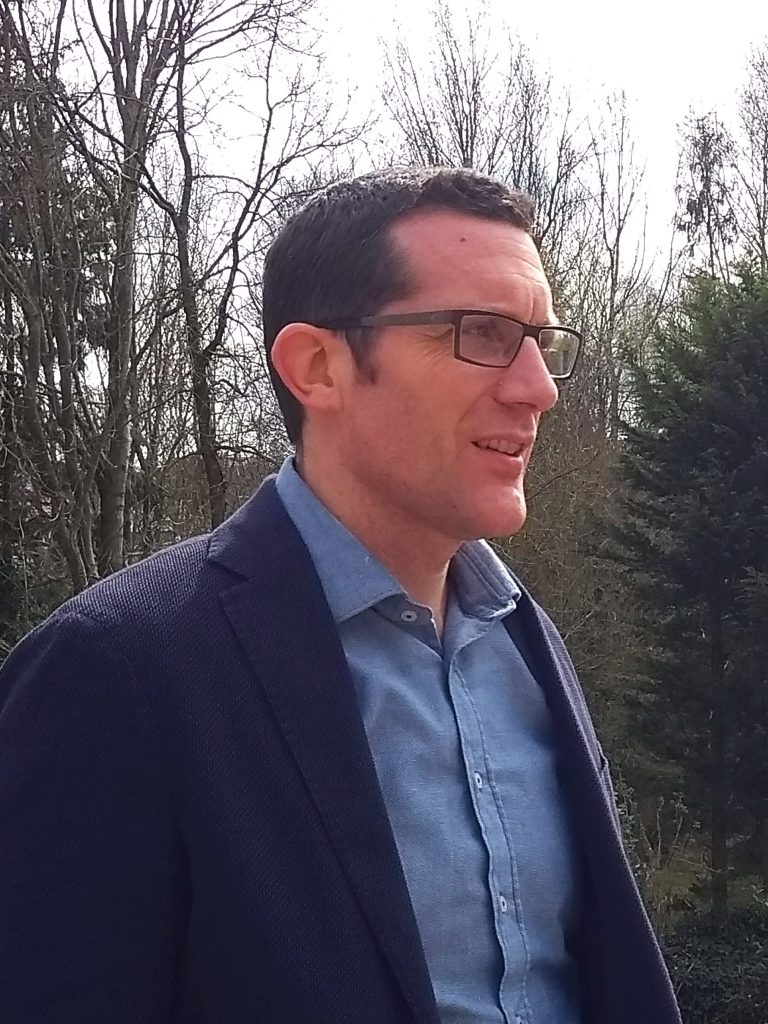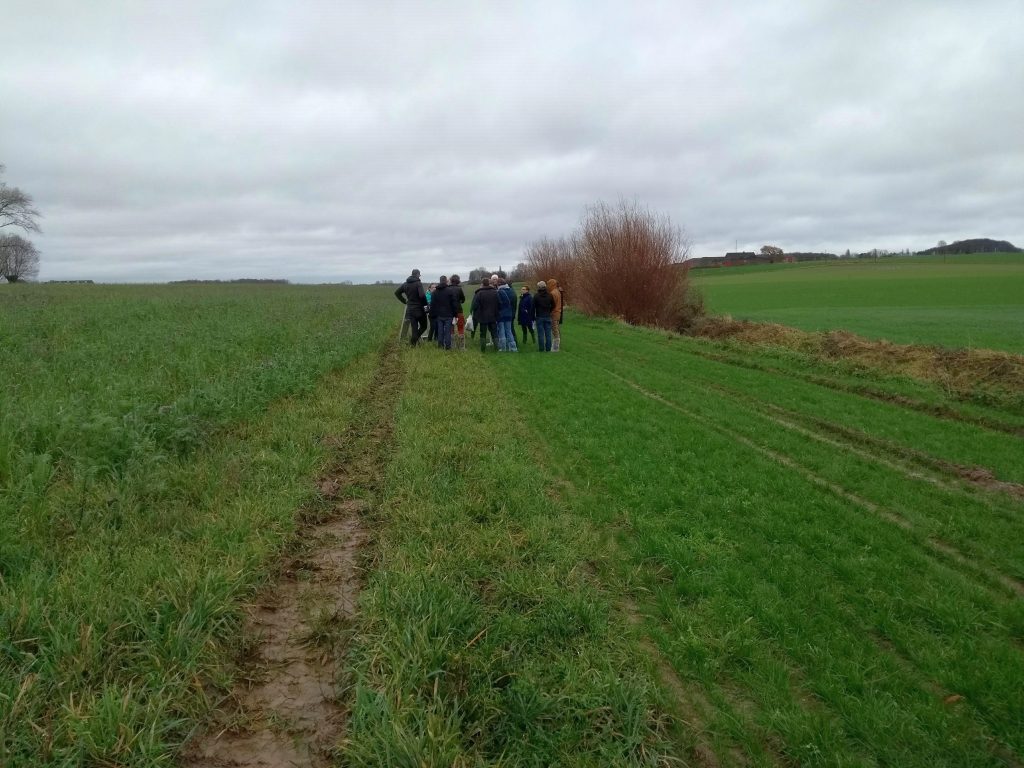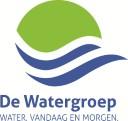This spotlight is part of a series of utility case studies intended to shed light on the opportunities and challenges facing regulators and water utilities in their efforts to incorporate nature-based solutions into water management. Learn more about the partnership between IWA and The Nature Conservancy here.
De Watergroep is the largest drinking water supplier in the Flanders region of Belgium. To serve a customer base of approximately 3 million inhabitants, the utility draws water supplies from 85 groundwater pumping stations and 5 surface water pumping stations. In the densely populated and cultivated region of Flanders, investing in the long-term protection of these water supplies through nature-based solutions (NBS) is a means of addressing serious water quality issues stemming from agricultural and industrial pollution.

Aerial view of the water basins at Kluizen near Ghent for the collection of surface water for drinking water supply. Photo: De Watergroep.
De Watergroep tackles pollution threats by focusing on the protection and enhancement of the ecosystems that surround their abstraction areas. The water utility currently faces restrictions on their surface water pumping activities during the warmer months of March to September. This is attributed to the increased threat of nutrient and pesticide infiltration into surface water supplies and a diminished dilution of chloride coming from industrial discharges. During seasons with low water levels or times of prolonged drought, any subsequent rainfall flushes large amounts of nutrient runoff into the surface water. As the utility with the largest amount of shallow water extraction sites and surface water intakes in the region, the need to protect water resources carries strategic importance for De Watergroep.
Similar to the experience of other utilities around the world, catchment protection in Flanders is recognized as the responsibility of the government, rather than the water company. Utilities have limited impact on land use in the catchment and therefore, are afforded limited responsibility. While these decisions fall under the jurisdiction of local and regional authorities, water utilities are increasingly relied on for consultation and guidance. De Watergroep has secured this role by actively engaging with government agencies, fellow water utilities, research organizations and the local farming community on the topic of water protection. They are invested in developing sustainable solutions that encourage and rely on the involvement of all stakeholders within their catchment areas. To many water utilities facing challenges in combating the impact of agricultural pollution on raw water supplies, De Watergroep’s case illustrates how a strong utility voice has significant potential to foster acceptance of a new set of solutions.
Outdated and weakly enforced water protection laws signaled a need for Flemish water utilities to be proactive in addressing the risks to drinking water supplies from inadequate protection. In 2015, in close collaboration with the Flemish Environmental Agency (VMM) and a consortium of Flemish public water utilities, De Watergroep led the development of a risk-based protection plan to control the risks to drinking water supplies and ensure groundwater quality and quantity. Combining independently gathered information about catchment areas with information from several government databases, an expert group prepared a list of the possible hazards for groundwater quality and quantity. This allowed the involved water companies to develop a matrix for classifying hazardous events and define appropriate management plans. The strategy was officially recognized in Flemish Legislation in 2013[1]. De Watergroep additionally participates as a member of the Coordination Commission on Integrated Water Policy (CIW), a committee designed to guarantee a coordinated approach to integrated water policy in Flanders. As part of the Commission, the utility is particularly adamant about the importance of water protection through adapted land use. De Watergroep’s proactive engagement merits attention in the NBS space not only because it enables more effective definition of the site specific and appropriate NBS intervention, but because it sets the stage for regional water utilities to build stronger relations with the governmental organizations and other stakeholders involved in water management.

Location of the groundwater pumping sites of De Watergroep in Flanders, classified by vulnerability to pollution. Source: From Development of a risk-based approach for better protection of drinking water catchments in Flanders (Belgium), IWA Publishing Water Supply. 2015;15(4):746-752. doi:10.2166/ws.2015.029
In Belgium, certain drinking water abstraction areas are subject to protection as a means of ensuring quality and reducing treatment costs. Water companies have control over any activities that take place in the most immediate zone surrounding the catchment (defined as zones where water can reach the catchment area within 24 hours). Regulatory requirements like this and the European Water Framework Directive have served as an icebreaker to initiate greater interaction between utilities and regulators. De Watergroep was successful in capitalizing on this opportunity to bring a utility’s voice into conversations with regulators and government agencies regarding the governance mechanisms that can ensure protection of water resources. They promote deeper engagement and collaboration with the Flemish government on all matters related to the protection of drinking water, from the design of legislation to communication, to the steering and monitoring of research studies. The Flemish Ministry for the Environment (VMM) now consults them on the design of more effective water quality standards and granting of environmental permits that influence water quality and quantity.
Simon Six, Water Resources and Basin Management Team Leader at De Watergroep, is optimistic given the noticeable improvements they’ve seen from using a NBS approach to catchment management. De Watergroep has observed the benefits of NBS on water quality for some time, and now sees greater acceptance among stakeholders that NBS can be used as a tool for water protection. At pumping sites, utility staff measure groundwater depth and quality to model the basin and identify areas that would be suitable for NBS interventions.

Resulting data from these interventions indicates that wells protected by natural areas have much better water quality compared to areas of intense land use, even in the region’s most vulnerable aquifers. In fact, the wells with natural surroundings had little to no parameters indicating diffuse pollution of the aquifers. Simon explains that protecting the quality of the catchment area around wells is a practice that has been in place since pumping activities began in the late 19th century. When the Flemish legislation on groundwater protection was put in place in 1985, the focus on protecting groundwater catchments intensified. Despite legislative backing, challenges remain in conveying these benefits to the agricultural industry and convincing them to adopt best management practices that reduce pollution.
“We want as much nature as possible in our catchments. That’s our goal. We see that the places where we have only natural activities in the groundwater catchment areas have good water quality, even if it’s a very vulnerable aquifer. In extraction areas where we don’t have nature, the groundwater quality is not as good and extra treatment is necessary”, Simon Six, Water Resources and Basin Management Team Leader at De Watergroep.
Historically, there has been little interaction between water suppliers and the farming community. Citing the example of a loosely enforced surface water regulation that requires a 1 meter buffer between fields and streams, Simon shares the thorny conversations that emerged following De Watergroep’s proposals to address pollution concerns. Increase the size of buffer zones around rivers? Local farmers place value on every square meter of land. This would be a sizable request. However, recognizing the pressures faced by the agriculture sector was important to understanding why farmers have traditionally only been concerned with meeting compliance. Several meetings with farmers have indicated it will be difficult to convince them to take action beyond legal requirements. To make matters more complicated, there are no legal protection zones for surface water. Nevertheless, De Watergroep’s efforts to find a common ground with the agriculture sector are generating positive reverberations. The utility is currently designing an informal cooperative program in partnership with the farming community to build the foundation for better dialogue. By modeling groundwater flow to determine which fields have the greatest impact, De Watergroep will identify willing local participants for a pilot project that evaluates how farmers can evolve toward more sustainable agricultural practices. The pilot project will be fundamental to developing a multi-stakeholder dialogue that discusses new solutions for agricultural pollution.

A 5m grass buffer strip was installed as a pilot test in an EU-funded project to protect the water in the small river, Bollaertbeek, which is used for drinking water production after treatment in the province of West-Flanders. Photo: De Watergroep.
Moving forward, De Watergroep is actively searching for new opportunities to finance their NBS programs and build a stronger evidence base for their implementation. Pilot projects are currently financed by the utility, project partners, research grants and a portion of consumer bills dedicated to water protection projects that focus on herbicides and pesticides. De Watergroep also has a small capacity to work with nature management organizations and make strategic land purchases surrounding their wells. Their biggest opportunity, which has yet to be brought into practice, lies in the possibility of directing yearly groundwater taxes paid to the government toward water protection efforts.
De Watergroep’s NBS approach to groundwater and surface water protection was primarily driven by factors that are common to most water utilities around the world: concerns over water quality and regulatory compliance. The utility is dedicated to mapping opportunities for strategic partnerships and collaborations with those invested in the health of Flanders’ catchments. “The best way to convince the people is to have good pilot cases, a strong and clear presentation of the problem and opportunities for the different sectors to meet each other. We’re constantly looking for those opportunities.”
This utility spotlight has been written by Jessica Ertel, IWA Consultant, in collaboration with De Watergroep and with inputs from TNC.
References
[1] Belgian Statute Book 2013 8 november 2013 Besluit van de Vlaamse Regering tot wijziging van het besluit van de Vlaamse Regering van 13 december 2002 houdende reglementering inzake de kwaliteit en de levering van water, bestemd voor menselijke consumptie, wat betreft het opleggen van openbare dienstverplichtingen met betrekking tot risicobeheer, crisibeheer en leveringszekerheid (Act of the Flemish Government of amending the act of the Flemish Government of 13 December 2002 on the quality and supply of water for human consumption, as to impose public service obligations on risk management, crisis management and supply security). Publication of 9 December 2013, pp. 97477–97480.




